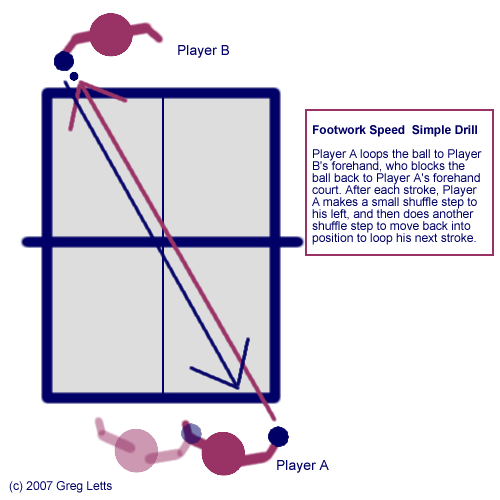
This simple drill technique for increasing your footwork speed is best used with drills where the ball is being placed to the same location. I’ll describe how to use the technique for a simple forehand loop drill.
Performing the Drill
Player A is performing forehand loops crosscourt, while Player B is blocking the ball back to Player A’s forehand court. After hitting his stroke, Player A should quickly take a small shuffle step to his left, and then shuffle step back to his right to play the next stroke.
Player A should begin with only a small shuffle step, and as his footwork speed improves, he can attempt to move further.
Benefits of the Drill
There are a number of benefits for Player A when performing this drill, including:
- Increased footwork speed – Player A will rapidly improve his footwork speed if he performs this drill correctly.
- Improved form and balance – in order to successfully perform this drill, Player A will need good form and balance, or else he will not recover in time to hit his next stroke. Players who use too large a swing or tend to lean rather than moving their feet will have to adjust in order to complete this drill.
- Player A will get used to moving after hitting the ball, instead of standing still.
Variations
- If the drill is too difficult, Player A can start with shadow play in order to get his footwork correct.
- Player A can also use a shuffle step to his right, so that he alternates between moving to his left and his right after stroking the ball.
- If Player A is finding it hard to force himself to move far enough, place a line on the floor to Player A’s left with some tape or chalk, perpendicular to the endline of the table . Have Player A move to the left side of the line after hitting the ball, and then move back to the right to hit his next stroke.
- Have Player A perform a shadow stroke when he moves to his left. (This will make the drill very difficult.)
- Use slower shots, such as pushes or slow counterhits, to give Player A more time to move between strokes.

